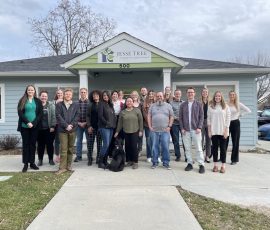“Should I Hire a Development Director?”

I hear this question a lot from leaders of small to mid-size nonprofits, especially from those leading organizations that have operated without paid professional development staff. This is certainly an important decision, and not an easy one to make.
Many nonprofit leaders and boards operate with the false assumption that adding a paid development director (DD) is a silver bullet solution to all of their financial problems. Unfortunately, this type of thinking leads many organizations through a disappointing chain of failed DD hires. Often the reason things don’t work out has nothing to do with the ability of the DD. It’s often because the organization has failed to build a development culture to lay the groundwork for this important new hire.
Below I’ve listed some actions key players in an organization need to be taking in order to foster a development culture. Organizations that work to put these in place will help ensure the success of their first professional development hire:
- The executive director is …
Actively leading the development effort. In the absence of a paid DD, the executive director (ED) should be operating as the de facto DD. If development efforts are put on hold until the addition of a DD that’s often a sign an organization is not committed to creating a development culture.
Engaged with individual donors. It is not enough for an ED to fill their development time planning fundraisers or writing fundraising letters. An ED should be building a development culture by actively cultivating and soliciting individual donors, particularly major donors.
Prepared to partner with a DD. Partnering with and leading a paid DD is an art and a science. It is not a good sign if the executive director is eager to hang up his or her development hat once the new DD is hired. The two should work closely together to spearhead the organization’s development efforts. - The board is …
Generously giving of its own funds. An organization with board members that are not giving generously or considering its mission to be one of their top three financial commitments is not building a DD-ready board culture. If this is the case, the ED and Board chair should take the time to address and change the financial commitment of the members. “
Connected to the major donor community. The DD-readiness of a board is as much related to who they know as what they know about development. Cracking the major donor community is often as simple as recruiting several new members with relationships in the major donor community.
Already involved in the development effort. While it is helpful if board members are assisting with donor events, a DD-ready board is also actively bringing their contacts to the table. If they are connecting their contacts to the executive director or hosting small group gatherings those are good signs of a growing board development culture. - The infrastructure includes…
A growing donor base. A flat donor base signals that the organization may not be DD-ready. The donor base should be growing to the point that the nonprofit cannot sustain the growth without the addition of a paid development professional
Key tools of effective development. To make a significant step toward building a development culture, an organization must begin to imbed the key elements of effective development in their organization. Find an explanation of the Case Statement, Segmented Donor List, Annual Plan, and Development Team as well as a short video outlining the Murdock Trust’s Essentials of Development Training.
Back-office support. An organization with a development-ready culture is making provisions for (paid or volunteer) back-office administrative support. This frees up the DD to build donor relationships rather than being buried in creating spreadsheets or updating donor databases.
A working strategic plan. If an organization lacks a vision and a working strategic plan, it suggests that it merely aspires to meet its budgetary needs rather than truly making a difference. Remember, people don’t want to give to budgets. They’re inspired to give by a vision that will change the world. - A successful hiring strategy will enable the organization to …
Identify the right candidate. An organization can do all the prep work to become DD-ready and still make a bad hire. This is where a paid or volunteer consultant can help. A consultant can help develop a realistic job description, lead a search for qualified candidates, and help guide an effective interview and reference-check process. (For many smaller nonprofits, the limited financial package for the new DD position can limit the organization’s ability to hire an experienced DD or one will not be tempted to jump ship when a more lucrative development opportunity comes along. Therefore some nonprofits have sought to hire a mission faithful candidate who may have little or no development experience but is already involved as a staff member, donor, or volunteer with the organization.)
Successfully onboard the new DD. The most effective use of a development consultant may be to train or coach the new DD once hired. This is particularly true if the new DD has little to no development background. In addition, if the executive director lacks the experience to effectively partner with or supervise the DD, a consultant can help prepare the leader for this significant task.
This is not intended to be an exhaustive checklist of all the things an organization must accomplish before hiring a DD. Yet I believe it is a fair description of the organizational culture most conducive to a successful hire. Attention to these important elements can lower the risk of making a failed development hire and increase the odds of landing a DD that will thrive and grow with your mission.
John Franklin is a Program Director at the M.J. Murdock Charitable Trust.








